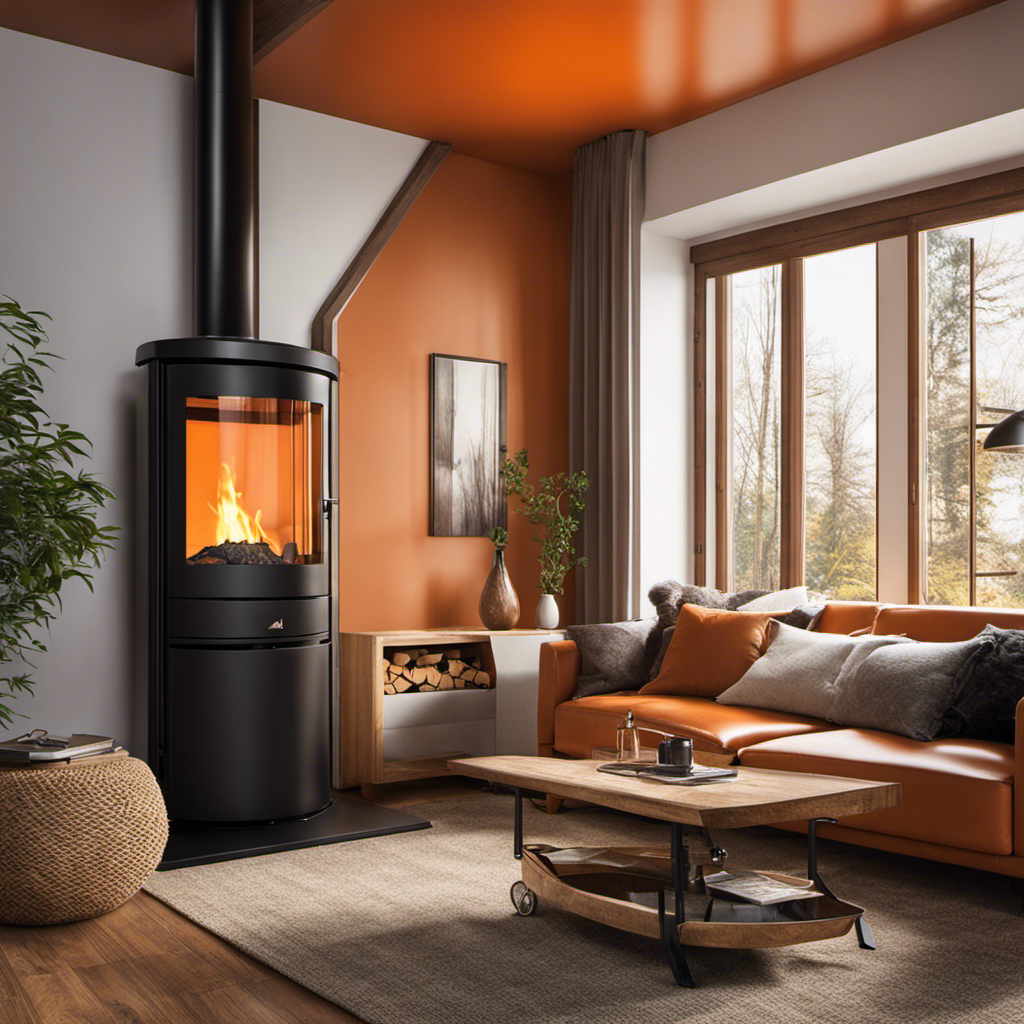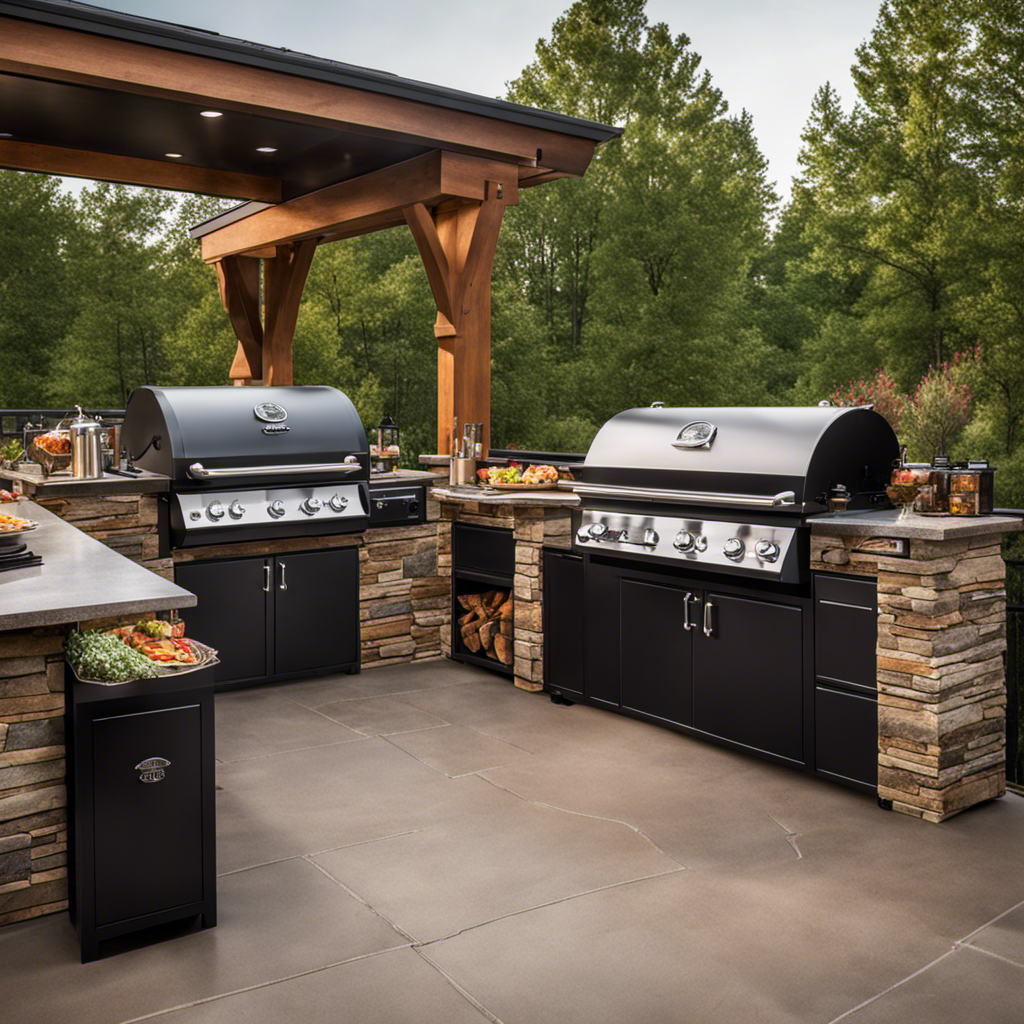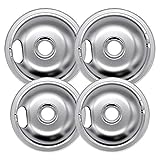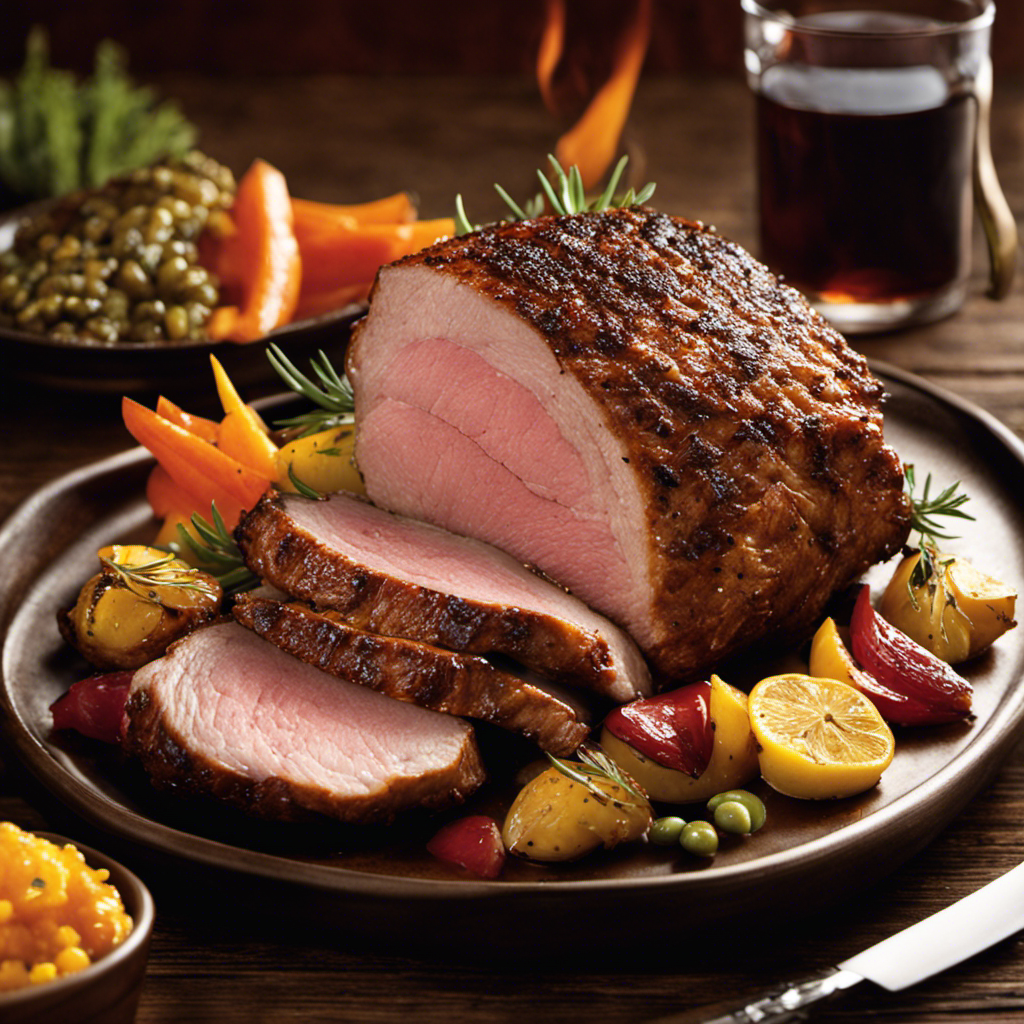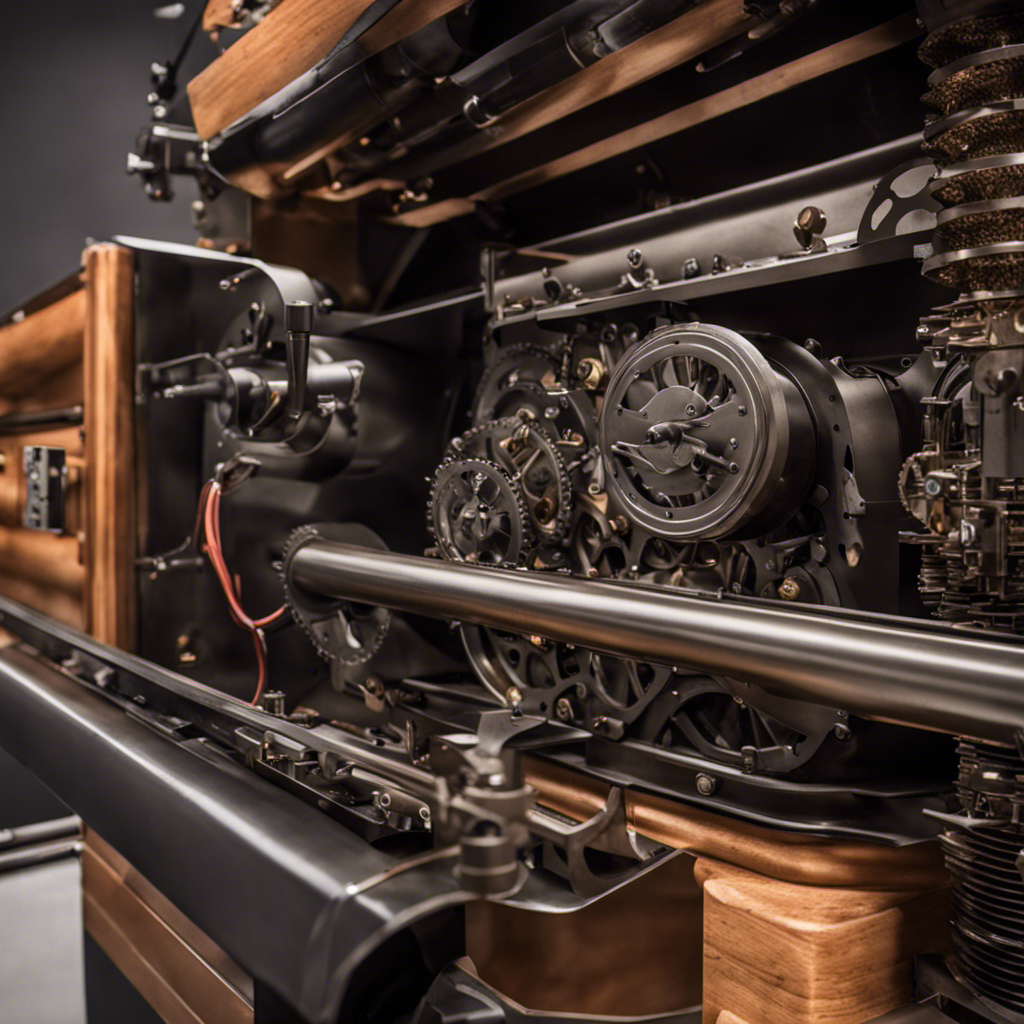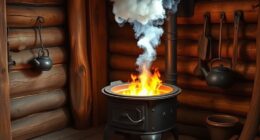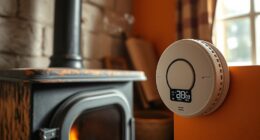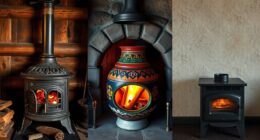Have you ever thought about comparing pellet stoves and wood stoves? In this article, I’ll delve into the different aspects that can help us make a well-informed choice.
We will delve into the energy efficiency, environmental impact, cost-effectiveness, heat output, maintenance requirements, fuel availability, installation considerations, aesthetics, and user-friendliness of both types of stoves.
By analyzing these aspects, we can determine which option is most suitable for our heating needs.
So, let’s dive in and unravel the mystery of pellet and wood stoves.
Key Takeaways
- Pellet stoves are more energy efficient and environmentally friendly compared to wood stoves.
- Wood stoves have lower upfront costs and easier access to fuel sources, while pellet stoves have higher upfront costs and may require specially manufactured pellets.
- Pellet stoves have higher heat output and heating capacity, while wood stoves can provide efficient heat with dry and well-seasoned firewood.
- Pellet stoves require less cleaning and maintenance, produce less waste, and have a smaller footprint, while wood stoves require more frequent cleaning and have a traditional aesthetic appeal.
Energy Efficiency Comparison
When it comes to energy efficiency, you’ll find that pellet stoves are typically more efficient than wood stoves. Pellet stoves utilize small, compressed wood pellets as fuel, which allows for a more controlled and consistent combustion process. This results in higher energy savings compared to wood stoves.
Pellet stoves also produce fewer carbon emissions, making them a greener choice for heating. The pellets used in these stoves are made from waste materials, such as sawdust or agricultural by-products, which reduces the overall carbon footprint. Wood stoves, on the other hand, burn logs or wood chips, which can release more pollutants and contribute to higher carbon emissions.
Considering the energy savings and reduced carbon emissions, pellet stoves are a more environmentally friendly option.
Now, let’s move on to the environmental impact analysis.
Environmental Impact Analysis
The environmental impact of using either pellets or wood as fuel in stoves is a key factor to consider. A carbon footprint analysis is often used to compare the greenhouse gas emissions associated with each type of fuel.
Wood stoves release carbon dioxide into the atmosphere, contributing to climate change. On the other hand, pellet stoves have a lower carbon footprint due to the controlled combustion process and use of renewable biomass pellets.
Additionally, when it comes to air quality, wood stoves tend to produce more particulate matter and harmful pollutants compared to pellet stoves. This can have negative health effects, especially for individuals with respiratory issues.
Considering the carbon footprint analysis and air quality comparison, it is clear that pellet stoves have a smaller environmental impact compared to wood stoves.
Moving forward, it is important to evaluate the cost-effectiveness of these two options.
Cost-effectiveness Evaluation
To determine which option is more cost-effective, you should consider factors such as initial purchase price, fuel availability, and maintenance expenses.
When it comes to fuel availability, both pellet and wood stoves are widely accessible. However, wood stoves have the advantage of using a fuel source that can be easily obtained from local sources, such as fallen trees or firewood. On the other hand, pellet stoves require specially manufactured pellets, which may not be as readily available in all areas.
In terms of installation cost, pellet stoves tend to be more expensive due to the need for additional equipment such as a hopper and auger system. Wood stoves, on the other hand, have a simpler installation process and generally have lower upfront costs.
Considering these factors, it is important to evaluate the overall cost-effectiveness of each option before making a decision.
Transitioning into the next section, it is also crucial to compare the heat output of pellet and wood stoves.
Heat Output Comparison
When comparing the efficiency of pellet stoves versus wood stoves, it is important to consider factors such as heat output and fuel consumption.
Pellet stoves are known for their higher efficiency levels, as they burn pellets made from compressed sawdust or other biomass materials.
However, wood stoves can still provide efficient heat, especially when using dry and well-seasoned firewood.
In terms of environmental impact, both pellet and wood stoves have their drawbacks, with pellet stoves producing more emissions during the manufacturing process and wood stoves emitting more particulate matter during combustion.
Lastly, when it comes to cost comparison, pellet stoves tend to have higher upfront costs due to the need for specialized equipment and fuel, while wood stoves offer a more affordable option with easily accessible firewood.
Efficiency: Pellet Vs Wood
Want to know which is more efficient? Pellet stoves or wood stoves?
When it comes to energy consumption and heating capacity, pellet stoves have the upper hand. Pellet stoves are designed to burn wood pellets, which are highly compressed and made from sawdust or other biomass materials. These pellets have a high energy content and burn more efficiently than traditional wood logs. They also have a higher heating capacity, meaning they can produce more heat per unit of fuel.
Wood stoves, on the other hand, require larger amounts of wood logs to produce the same amount of heat. So, if you’re looking for a more efficient option, pellet stoves are the way to go.
Now, let’s delve into the environmental impact: which is worse…
Environmental Impact: Which Is Worse
The environmental impact of pellet stoves versus wood stoves is a pressing concern. When comparing the two, several factors come into play that affect carbon emissions and air quality.
-
Pellet stoves:
-
Produce lower carbon emissions compared to wood stoves.
-
Use wood pellets made from compressed sawdust, a recycled material.
-
Have a more efficient combustion process, resulting in fewer particulate matter emissions.
-
Wood stoves:
-
Emit higher levels of carbon emissions due to incomplete combustion.
-
Utilize logs, which require cutting down trees and contribute to deforestation.
-
Emit more particulate matter, which can negatively impact air quality.
Considering the importance of reducing carbon emissions and improving air quality, pellet stoves appear to have a smaller environmental impact compared to wood stoves. However, it’s crucial to also consider the cost comparison between the two options.
Cost Comparison: Pellet Vs Wood
In terms of installation requirements and fuel availability, there are some key differences between pellet and wood stoves.
When it comes to installation, pellet stoves require a venting system to remove the exhaust gases, while wood stoves need a chimney or flue to release the smoke. This means that pellet stoves can be installed in a wider range of locations since they don’t rely on an existing chimney.
In terms of fuel availability, wood stoves have the advantage of using a readily available fuel source – firewood. However, this also means that you need to have a constant supply of firewood and a place to store it. On the other hand, pellet stoves require specially made pellets, which may not be as easily accessible in some areas. It’s important to consider the availability and cost of these fuels before making a decision.
Moving forward to the next section on maintenance and cleaning requirements, let’s explore what each type of stove entails.
Maintenance and Cleaning Requirements
When it comes to comparing the cleaning frequency of pellet and wood stoves, there are a few key points to consider.
Firstly, pellet stoves typically require more frequent cleaning due to the ash and residue that is produced from burning pellets.
On the other hand, wood stoves may require less frequent cleaning as the ash can be easily removed.
As for the maintenance cost comparison, pellet stoves may have higher maintenance costs due to the need for regular cleaning, as well as the potential need for professional servicing.
Wood stoves, on the other hand, may have lower maintenance costs as they generally require less frequent cleaning and servicing.
Cleaning Frequency Comparison
Cleaning a pellet stove is typically less frequent compared to a wood stove because pellet stoves have a more efficient combustion process that produces less ash and soot. However, regular maintenance is still necessary to ensure optimal performance and longevity.
Here are some maintenance tips and cleaning techniques for pellet stoves:
- Clean the burn pot and ash trap regularly to prevent buildup and maintain proper airflow.
- Check and clean the exhaust vent to prevent blockages and ensure safe operation.
- Clean or replace the air filter to maintain efficient combustion.
By following these maintenance tips and cleaning techniques, you can keep your pellet stove running smoothly and efficiently.
Now, let’s move on to the next section where we will compare the maintenance costs of pellet and wood stoves.
Maintenance Cost Comparison
Regular upkeep is essential for both types of stoves to ensure cost-effective operation and longevity. When comparing the maintenance cost analysis of pellet and wood stoves, it is important to take into account factors such as fuel, cleaning, and repairs.
While wood stoves may require more frequent cleaning due to ash buildup, pellet stoves often require more maintenance due to the complex mechanisms involved in their operation. However, when considering long term savings, pellet stoves tend to be more cost-effective. They are more efficient, produce less waste, and require less labor-intensive cleaning. Additionally, wood pellets are generally cheaper and more readily available than firewood.
Transitioning into the subsequent section about the availability and accessibility of fuel, let’s explore the different options for obtaining fuel for both types of stoves.
Availability and Accessibility of Fuel
If you’re looking for a convenient option, pellet stoves may be a better choice due to the ease of access and availability of fuel. Here are some key points to consider:
-
Fuel availability: Pellet stoves use compressed wood pellets, which are widely available in stores and online. You can easily find a reliable source of fuel without much effort.
-
Cost comparison: When comparing the cost of fuel, pellets are generally cheaper than firewood. Wood prices can fluctuate depending on demand and availability, while pellets tend to have a more stable price point.
Considering the convenience of finding fuel and the potential cost savings, pellet stoves present a practical option for heating your home.
Now, let’s delve into some important installation considerations to ensure you make the right choice for your needs.
Installation Considerations
When it comes to installation considerations, both pellet and wood stoves have their own pros and cons. Let’s take a closer look at the installation cost and space requirements of each option.
| Factor | Pellet Stoves | Wood Stoves |
|---|---|---|
| Installation Cost | Pellet stove installations tend to be more expensive due to the need for additional components such as a hopper, auger, and venting system. | Wood stove installations are generally less expensive since they don’t require complex mechanisms like pellet stoves. |
| Space Requirements | Pellet stoves have a smaller footprint, making them suitable for smaller spaces. They also come with a hopper that can hold a substantial amount of pellets, reducing the need for frequent refilling. | Wood stoves require more space due to their larger size and the need for a dedicated area to store firewood. |
Considering the installation cost and space requirements, it’s important to assess your budget and available space before making a decision. Now, let’s delve into the next section, which explores the aesthetics and design options of pellet and wood stoves.
Aesthetics and Design Options
Considering the aesthetics and design options, it’s important to choose a stove that complements the overall style and decor of your home. When comparing the aesthetics of pellet and wood stoves, there are a few key factors to consider:
-
Style: Pellet stoves often have a more modern and sleek design, with clean lines and a minimalist look. Wood stoves, on the other hand, tend to have a more traditional and rustic appeal.
-
Color and Finish: Pellet stoves come in a variety of colors and finishes, allowing you to customize the look to match your home. Wood stoves, on the other hand, showcase the natural beauty of the wood and can be stained or painted to suit your preference.
-
Size and Shape: Pellet stoves are generally smaller and more compact, making them a great option for smaller spaces. Wood stoves, on the other hand, come in a range of sizes and shapes, allowing for more flexibility in placement.
When evaluating the design options of pellet and wood stoves, it’s important to consider your personal style and the overall aesthetic of your home.
Transitioning into the subsequent section about user-friendliness and convenience factors, it’s also crucial to take into account factors that go beyond just the appearance of the stove.
User-Friendliness and Convenience Factors
Transitioning into the discussion of user-friendliness and convenience factors, it’s essential to evaluate how easy the stove is to operate and maintain.
When considering user friendliness, it’s important to assess the stove’s controls and interface. A well-designed stove should have intuitive controls that are easy to understand and operate. Additionally, features such as automatic ignition and temperature control can greatly enhance convenience for the user.
Maintenance is another crucial aspect to consider. A stove that requires frequent cleaning or complicated maintenance procedures may be less desirable for those seeking convenience. On the other hand, stoves with self-cleaning features or easy access to the ash pan and other components can make maintenance a breeze.
Ultimately, user friendliness and convenience factors play a significant role in determining the overall satisfaction and ease of use of a stove.
Frequently Asked Questions
Are Pellet Stoves More Expensive to Purchase Than Wood Stoves?
When comparing the cost and efficiency of pellet stoves and wood stoves, it is important to consider the initial purchase price. Pellet stoves can be more expensive upfront, but they offer higher efficiency and lower fuel costs in the long run.
Can a Wood Stove Be Converted to Burn Pellets?
Converting a wood stove to burn pellets can be a great idea. It allows for cleaner and more efficient burning, reducing emissions and saving money on fuel. The benefits of pellet stoves are worth considering.
How Often Do Pellet Stoves Need to Be Refueled Compared to Wood Stoves?
Pellet stoves typically need to be refueled less often compared to wood stoves. This is because pellets burn more efficiently, providing longer burn times. Additionally, pellet stoves have a lower environmental impact due to their cleaner combustion.
Are Pellet Stoves More Prone to Mechanical Issues Than Wood Stoves?
Pellet stoves may have more mechanical issues compared to wood stoves. While they offer convenience and efficiency, wood stoves have the advantage of simplicity and reliability. It’s important to weigh the pros and cons before making a decision.
Are There Any Government Incentives or Tax Credits Available for Purchasing Pellet or Wood Stoves?
There are no government incentives or tax credits available for purchasing pellet or wood stoves. When comparing costs, pellet stoves tend to be more expensive upfront but can be more efficient in the long run.
Are Pellet Stoves Less Messy Than Wood Stoves?
When doing a wood pellet stove comparison, one of the main advantages is its cleanliness. Pellet stoves produce minimal ash and creosote, resulting in less mess compared to wood stoves. This makes cleaning and maintenance much easier, making pellet stoves a more convenient option for many homeowners.
Conclusion
In conclusion, after carefully analyzing the various factors, it is evident that both pellet and wood stoves have their own advantages and disadvantages.
While wood stoves offer a traditional and cozy ambiance, pellet stoves provide a higher energy efficiency and lower environmental impact.
However, it is important to consider factors such as cost-effectiveness, heat output, maintenance requirements, and fuel accessibility when making a decision.
Ultimately, the choice between pellet and wood stoves depends on individual preferences and priorities, just like choosing between a crackling campfire and a sleek, modern fireplace.

